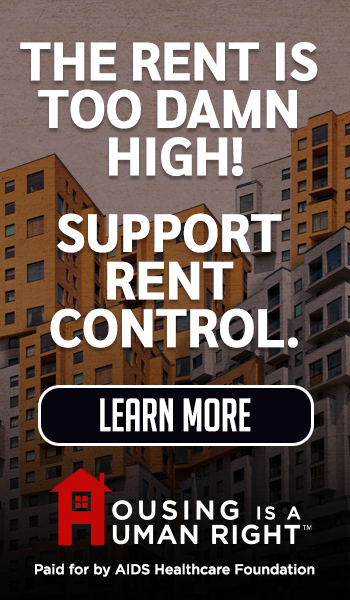Comments
iAUDIT! - On June 24, federal Judge David O. Carter released his long-awaited decision on a receivership for Los Angeles’ broken homelessness system. Rather than granting the receivership requested by the L.A. Alliance for Human Rights, (for whom I have done volunteer work), Judge Carter ordered the creation of a monitor with unfettered access to the City’s and LAHSA’s data systems, so the monitor could examine how the City collects data and creates reports on its programs. The monitor and all parties to the suit will attend a quarterly hearing before the judge to share the latest performance information. Both sides claimed victory, with the Alliance’s lead attorney calling the decision vindication for its years-long assertion the city has been making no progress on homelessness. On the other hand, a spokesperson for the City Attorney said, “…the judge made the right decision by rejecting the Alliance’s “radical request to appoint an unelected and unaccountable receiver. Over the last three years, the City of Los Angeles has successfully moved thousands of Angelenos off the streets, into housing and services. Thousands of new housing units have been built, and homelessness is down in L.A. for the first time in years.” The spokesperson’s statement was consistent with the Mayor’s constant messaging about supposed reductions in street and unsheltered homelessness.
But what are the most important parts of Judge Carter’s decision? What does it mean for the future of homelessness programs in LA? By closely reading the decision, we can glean five of the most important facts about the way the city and LAHSA manage their homelessness programs and billions in taxpayer dollars.
Takeway One: There is little or no proof of the alleged reductions in homelessness. Throughout his decision, Judge Carter berated the City and LAHSA for withholding information and evading requests for objective data. On page 39, lines 9 - 12, Judge Carter pointed out “the truth of reported progress remains clouded by evasive recordkeeping”, and “these failures [of proper data practices] have undermined public trust and judicial trust alike”. Nowhere in his decision did Judge Carter support the city’s claims of providing the thousands of housing units it claims.
Takeaway Two: There is a long history of documented and verified program failures for which no one has been held accountable. Between pages 11 and 26, the decision provides an overview of audits and assessments covering the years from 2001 to 2025. These reports show a persistent pattern of mismanagement, poor contract administration, and lax performance reporting. More importantly, the reports show that little or nothing has been done to correct the deficiencies. As Judge Carter wrote on page 10, lines 19 - 24, “For nearly twenty years, oversight bodies have repeatedly identified the same fundamental failures: poor fiscal oversight, inadequate contract management, and a chronic inability to ensure accountability for public funds. Each report has reinforced a troubling pattern: that rather than taking accountability and making changes, the longstanding deficiencies have been left to persist and deepen”.
Takeaway Three: The City is more interested in fighting accountability than it is in taking responsibility. As Judge Carter pointed out, the City spent considerable time and money evading data requests from Alvarez & Marsal, (A&M), the firm he appointed to perform an extensive assessment of the City’s homelessness programs. On page 37, lines 24 - 27, the judge wrote, “And rather than spending taxpayer dollars on finding the missing data or striving to provide verification, the City fought with the findings and methods of the A&M Assessment, the same methods they agreed to and paid for”. Again, on page 49, lines 20 - 22, Judge Carter said, “Days of the evidentiary hearing in May and June could have been avoided if the City had simply provided the data requested of it or put on witnesses to explain its reporting”. So, instead of providing the data as requested, or admitting it didn’t have it, the City hired a high-priced law firm for at least $900,000, to fight the objective findings of an assessment it agreed to. The absurdity of the City’s attacks on A&M was highlighted elsewhere in the decision, where Judge Carter wrote “The City wasted significant time during the hearing berating A&M for not adhering to certain governmental accounting standards even though the City agreed to the standards used by A&M and paid for the Assessment to resolve Plaintiffs’ previous sanctions motion” (p. 49 lines 10 -13).
As I have said many times in previous columns, the City’s homelessness programs are centered on appearances instead of results. Each press conference is carefully orchestrated to provide only positive news, and structured so that questioning the statistics is virtually nonexistent. When facts fail to support leaders’ claims, the fall back on rhetoric, using words like “compassion” and “respect for personal agency” to excuse leaving 45,000 people on the street every night.
Takeaway Four: The City Can’t Keep Its Stories Straight. As most of us were taught as children, it’s a lot easier to keep your story straight when you tell the truth. When you make things up, maintaining a consistent fable gets harder and harder. The decision provides a good example in the controversy over the number of Time Lilted Subsidy (TLS) units the City has created and paid for under the terms of the Roadmap Agreement and Alliance settlement. As the name implies, a TLS unit is an apartment paid at market or near-market rates, but subsidized by local government, to provide housing for a homeless or potentially homeless person, usually for two years. By its nature, such housing is temporary but can be counted as permanent under HUD regulations.
One of the justifications for using TLS programs is that it keeps a person in the community he or she is familiar with. Most advocates say a key to keeping someone housed is to locate them near the area he or she was in when they were found on the street. This makes it easier for the formerly unhoused person to maintain connections with service providers, potential or current employers, and social contacts. During the course of A&M’s assessment, the existence of 2,679 TLS came into question due to a lack of payment records and specific locations. Typically, the City ignored repeated requests for proof the 2,679 locations actually existed. Not until the Court ordered the City to produce the data did it provide a list of locations. However, at least 20 percent of the TLS units supposedly meant for unhoused people in LA were found to be outside City limits. Some were as far away as Kern, Riverside, or Orange counties. (p. 34 lines 17-18). While the court declined to question the effectiveness of placing someone dozens (or hundreds) of miles from the city, the fact that so many units are located in places far away from the client’s homebase undermines the argument supporting the importance of keeping someone in their community.
These kinds of inconsistencies are described thought the written decision. Although the City claimed credit for paying for 2,293 TLS beds, LAHSA’s financial records show the City paid for only 673, or 30 percent, of them. LAHSA tried to explain the discrepancy by saying the City’s money was “braided”, or mixed, with other funding sources to pay for the units. However, as the Alliance points out on page 25, lines 24 - 26, this kind of mixing is prohibited by the agreement, and the City is obligated to pay 100 percent of the costs if it wants to take credit for the TLS beds.
Takeaway Five: There is No Plan. As I recently wrote in CityWatch, the City has no coherent plan to reduce homelessness. Pages 39 - 49 of the decision go into detail about the City’s failure to develop and implement a consistent, coordinated homelessness program. Although it developed a plan to meet its obligation to create more than 12,000 new beds by 2027, it hasn’t met its intermediate milestones. Page 44 shows how the City has consistently failed to meet quarterly goals for mor than two years. Nevertheless, the City preposterously argues it will meet its goal by 2027, as if it can miraculously catch up in less than two years. A major part of the problem is that the City has no centralized authority to guide homelessness polices. Although Mayor Bass created the Deputy Mayor of Homelessness and Housing position last year, the office has no direct administrative control over the myriad departments with homelessness programs. A recent report from the Chief Legislative Analyst stated, “This report focused on the formation of a city homelessness governance structure and identified significant structural deficiencies. Chief among them was the absence of centralized oversight—no single entity or office is tasked with developing and implementing homelessness policy. Instead, responsibilities are scattered across numerous individuals and departments. The report also noted the lack of a unified forum for policy and program development, leaving even routine administrative issues without a clear resolution process. For example, multiple City departments manage contracts with varying degrees of involvement, creating confusion and inconsistency”. (pp. 22-23, lines 23 - 3). In short, despite all the positive public relations and talk about “bold action”, little has been done to make the structural changes needed to implement real reforms and bring true accountability to LA’s homelessness programs.
Where do we go from here? Despite all the problems and failures, and open resistance to change, Judge Carter did not order a receivership to manage LA’s homelessness system. In his decision, he cited the court’s limited ability to enter the policy arena. As he wrote, “Although democracies can be inefficient and even wasteful, only the voters of Los Angeles have the power to elect representatives to solve these problems”. (p. 62, lines 5-6). However, he made it clear his decision did not excuse the massive failures that have come to define homelessness programs in LA. As he wrote, “The multitude of solutions available to handle the homelessness crisis in Los Angeles and the Court’s deference to voters and policymakers does not, however, excuse noncompliance by the City. Flexibility with how to meet its obligations does not mean the obligations are optional. The Court takes the City’s commitments seriously and will not permit noncompliance”. (pp. 60-61, lines 25 - 1).
His intent in creating a Monitor position with full access to City and LAHSA data is to provide elected officials, the voting public, and taxpayers with the accurate information they need to make informed decisions about homelessness programming and funding. Perhaps this will be the start of accountability, or perhaps local leaders see Judge Carter’s decision as another opportunity to evade the reforms we all know are needed. Only time will tell. And we should remember his advice that only voters can decide who should be making decisions about how taxpayer funds are spent.
(Tim Campbell is a resident of Westchester who spent a career in the public service and managed a municipal performance audit program. He focuses on outcomes instead of process in his iAUDIT! column for CityWatchLA.)















